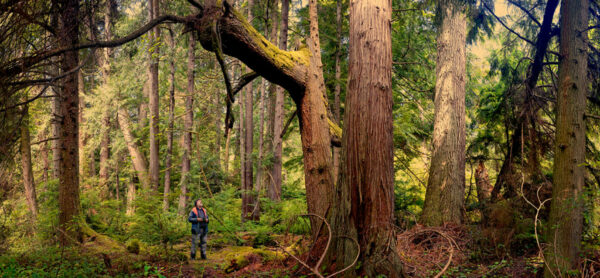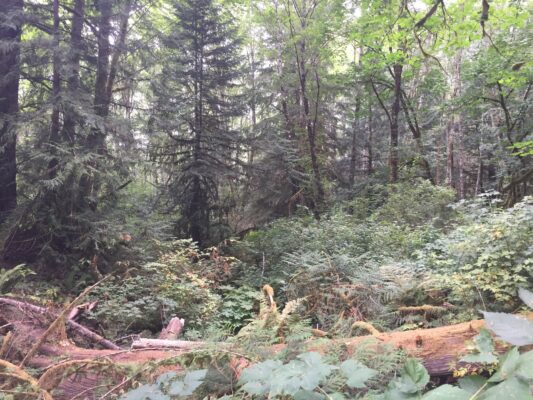For thousands of years, the forests of Puget Sound have been cared for by the native peoples who lived here. Many places that we may now think of as “wild” have in fact been carefully managed. Generations of cumulative human impact is what made the forests here into tremendous natural cathedrals.
The American settlers that arrived here not so long ago had different values and perspectives from the native peoples. They chose to harvest these forests – turning trees into timber, and timber into trade. When they hear that trees are being felled, many people think of the logging industry which makes up an important part of our region’s dynamic modern economy.
But there are reasons to fell trees that are unrelated to the price of lumber. It can be done as an act of care for our vibrant forests. In the long run, it’s a vital part of protecting and nurturing the forests that exist now, and ensuring that they become even more healthy and resilient in the future.

As the old saying goes: don’t miss the forest for the trees! You have to consider the health of the whole forest when making decisions about management actions. Almost all of the forests that GPC protects are growing on former sites of timber harvest. These lands were replanted after the harvest, but they were planted with an eye for the economic qualities of the regrown forest. Usually, that’s not quite the same as its ecological qualities. So these forests may end up with health issues.
For instance – these regrown forests may have been planted with trees that are too close together, as a way of maximizing the future timber harvest. They may have been planted as a monoculture, if there’s one particular species that’s desirable for harvest. They may be all the same age, and they may not offer a diverse range of habitats for woodland creatures. These factors may not reduce the value of the timber harvest – but once the forest is protected by GPC, we need to address them.
Otherwise, our forests may not be resilient to the conditions we will experience as our climate changes. Droughts are expected to become more frequent in the coming decades, and a lack of water could become a serious stressor for forests. Forests with a lower density of trees, or fewer “straws in the drink,” tend to have fewer trees that grow more vigorously. This reduces the risk of fire and disease in our forests.

In that context, felling some trees in a forest can have a huge positive impact on its health. Thinning out trees that are too close together gives the remaining trees much-needed space. Making patch cuts in the forest lets sunlight reach the forest floor, where new and diverse species of trees can be planted. Felled trees can be cut apart and used to build habitat piles, which provide a range of living spaces for woodland creatures. Trees that have been girdled become snags, providing habitat for birds. Over 40% of woodland vertebrates depend on dead wood!
Maintaining healthy, biodiverse forests will be an essential part of keeping our region resilient to climate change in the coming decades. These forests can shelter wetlands, which store water in the landscape and lessen the impact of droughts. They provide habitat for wildlife, including the vital salmon which depend on the forest canopy and woody debris to cool their streams. They sequester atmospheric carbon as they grow.
Felling trees in line with GPC’s forest management plans is part of the process of restoration – and so are YOU! Our volunteers build habitat piles, clear out invasive species, plant diverse natives, and even more! Our members make it all possible! These actions contribute directly to making our region more resilient to climate change, and to making our forests healthier and more beautiful. Take a look at our events page to see upcoming stewardship opportunities!

